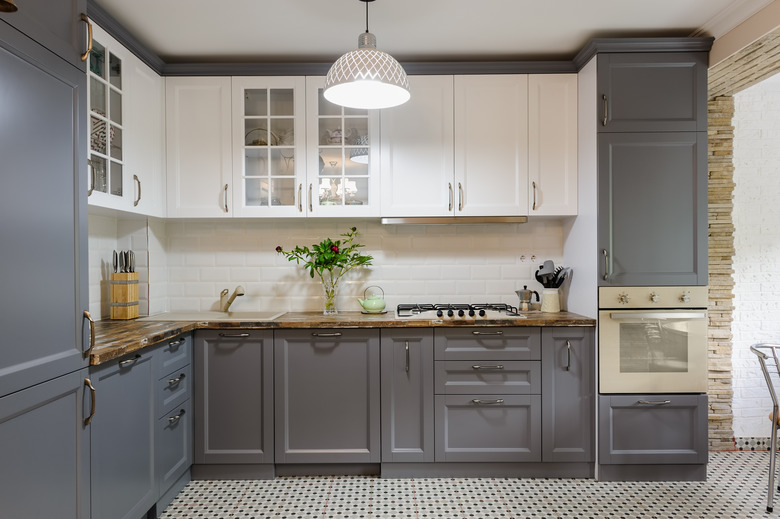How To Prevent A Painted Kitchen Cabinet From Chipping
Your painted cabinets chipping and peeling certainly wasn't part of the plan, but it happened almost as soon as you completed your kitchen renovation. Now there's paint missing from around the cabinet knobs and strips of paint missing where the cabinet door closes, plus dings and scratches appear any time you have a clumsy moment. It feels like a major "Pinterest fail" and not at all what you hoped for.
Chin up! It's actually a common problem to have painted cabinets chip and peel, and that means people have already developed solutions to give paint a long-lasting finish. If your kitchen cabinets are peeling or the paint scratches off with a fingernail, you just need to do some touch-ups with the right products and procedures.
Prep Before Painting
Prep Before Painting
The most important thing you can do when painting your kitchen cabinets is to take your time. Don't rush and skip over steps just so you can get to the exciting part — painting! Paint peels because it didn't adhere well to the surface. Using a good primer goes a long way, but nothing replaces good surface prep.
For best results, you can scrape off the existing paint and sand the wood cabinets so that the primer has a clean surface to bind to. If the primer says it can be used on top of existing paint, you'll still want to make sure the surface is smooth. Scrape and sand any areas that are peeling or bumpy.
If your cabinets are already smooth and you're ready to jump in with the primer, make sure you use a grease-cutting cleaner on them first. The invisible layer of grease on your kitchen cabinets can prevent the primer from bonding correctly to the cabinet. Any dust or grime also gives your cabinet a textured look as soon as it's painted, which is a far cry from the smooth aesthetic you likely have in mind.
Prevent Painted Cabinets From Chipping
Prevent Painted Cabinets From Chipping
Any primer is better than no primer, but some primers on the market were designed to prevent peeling. They'll form a tight bond that makes your next coat of paint last a much longer time. Look for products labeled "peel bonding primer" or "peel stop."
As long as the current coat of paint isn't chipping or peeling, you can apply these primers directly over top of the existing paint after a thorough cleaning. However, taking the time to do proper prep work will increase the primer's performance.
Protect With a Top Coat
Protect With a Top Coat
The paint around cabinet knobs and handles is at particular risk for peeling simply because fingers and fingernails come into contact with this paint over and over throughout the day. Wouldn't it be nice if you were actually bumping up against a clear top coat instead of the actual paint? Of course it would! So before you hang those kitchen cabinets back up and admire your work, add at least one layer of a clear, protective top coat.
Hardware and Felt Pad Considerations
Hardware and Felt Pad Considerations
Don't give the paint around knobs and handles any excuses to peel. Friction from loose hardware can cause paint to tear, chip and peel, even if you've used the best paint for kitchen cabinets. Regularly tighten hardware to prevent it from contributing to a paint chipping problem.
Sometimes the paint on kitchen cabinets peels behind closed doors — literally. If there's paint on the back of the cabinet door that sticks to the paint on the cabinet exterior, eventually the paint will weaken and peel off completely. Fortunately, it's also very easy to prevent. You simply need to make sure the painted surfaces don't come into contact. Small pieces of felt can be glued to the inside corners of the doors for this purpose.
